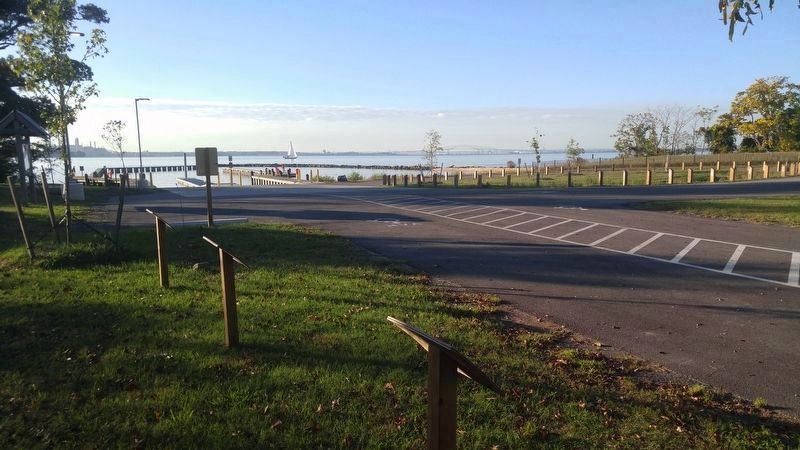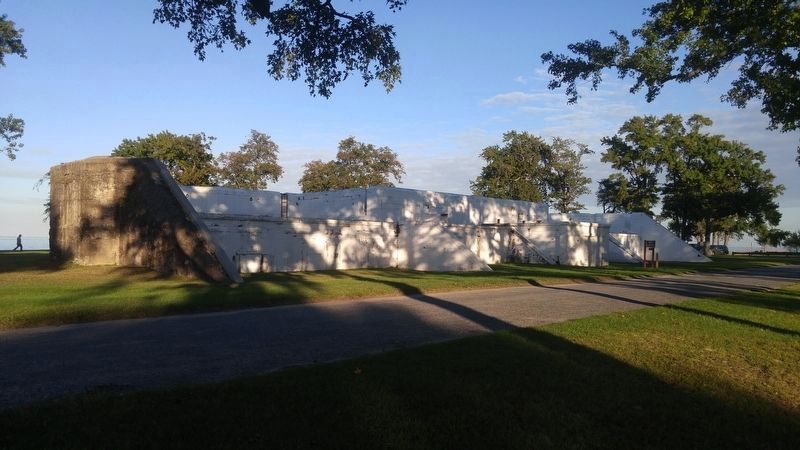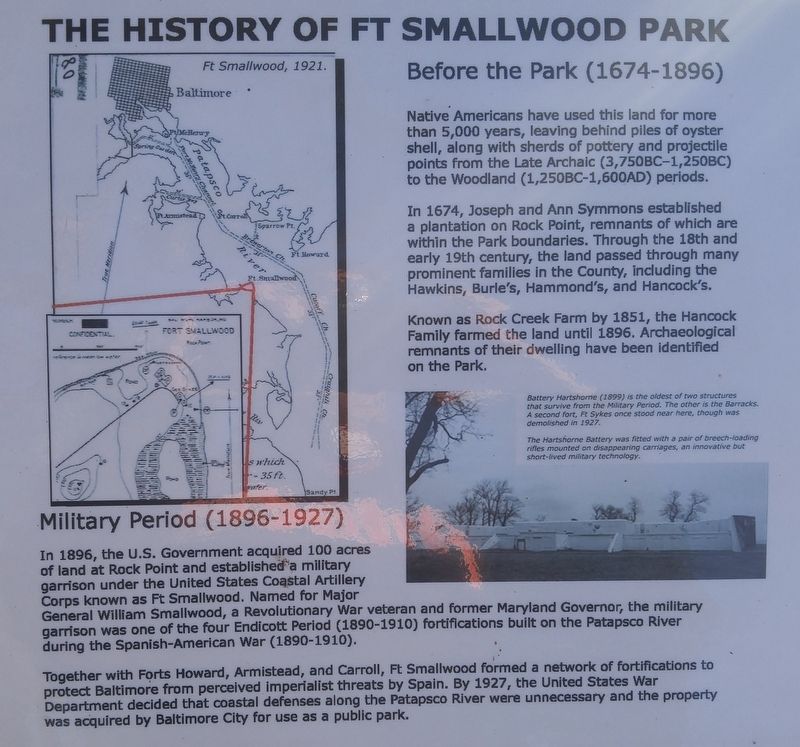Pasadena in Anne Arundel County, Maryland — The American Northeast (Mid-Atlantic)
The History of Ft Smallwood Park
Native Americans have used this land for more than 5,000 years, leaving behind piles of oyster shell, along with shards of pottery and projectile points from the Lat Archaic (3,750BC-1,250BC) to the Woodland (1,250BC-1,600AD) periods.
In 1674, Joseph and Ann Symmons established a plantation on Rock Point, remanants of which are within the Park boundaries. Through the 18th and early 19th century, the land passed through many prominent families in the County, including the Hawkins, Burle's, Hammond's, and Hancock's.
Known as Rock Creek Farm by 1851, the Hancock Family farmed the land until 1896. Archeaological remnants of their dwelling have been identified on the Park.
Military Period (1869-1927)
In 1896, the U.S. Government acquired 100 acres of land at Rock Point and established a military garrison under the United States Coastal Artillery Corps known as Ft Smallwood. Named for Major General William Smallwood, a Revolutionary War veteran and former Maryland Governon, the military garrison was one of the four Endicott Period (1890-1910) fortifications built on the Patapsco River during the Spanish-American War (1890-1910).
Together with Forts Howard, Armistead, and Carroll, Ft Smallwood formed a network of fortifications to protect Baltimore from perceived Imperialist threats by Spain. By 1927, the United States War Department decided that coastal defenses along the Patapsco River were unnecessary and the property was acquired by Baltimore City for use as a public park.
Topics. This historical marker is listed in these topic lists: Forts and Castles • Native Americans • Settlements & Settlers • War, Spanish-American. A significant historical year for this entry is 1674.
Location. 39° 9.742′ N, 76° 29.075′ W. Marker is in Pasadena, Maryland, in Anne Arundel County. Marker can be reached from Fort Smallwood Road (Maryland Route 174) 0.1 miles Parkside Drive. Marker is within the park, near the boat ramp, and directly in front of the old concession stand. Touch for map. Marker is in this post office area: Pasadena MD 21122, United States of America. Touch for directions.
Other nearby markers. At least 8 other markers are within 3 miles of this marker, measured as the crow flies. A different marker also named The History of Ft Smallwood Park (here, next to this marker); Preservation in Progress (a few steps from this marker); Bill Burton Fishing Pier (about 500 feet away, measured in a direct line); Fort Smallwood Park Flagpole (about 800 feet away); Prime View (approx. 0.4 miles away); Veterans of Foreign Wars (approx. 1.3 miles away); In Memoriam

Photographed By F. Robby, October 6, 2016
2. The History of Ft Smallwood Park Marker
This marker is the one in the center foreground of this photo. View is of the boat ramp looking out on the water where Rock Creek meets the Patapsco River. The Francis Scott Key Bridge, and downtown Baltimore behind it, is way off in the background.

Photographed By F. Robby, October 6, 2016
3. Battery Hartshorne
Text from the marker photo: Battery Hartshorne (1899) is the oldest of two structures that survive from the Military Period. The other is the Barracks. A second battery, Battery Sykes, once stood near here, though was demolished in 1927. The Hartshorne Battery was fitted with a pair of breech-loading rifles mounted on disappearing carriages, an innovative but short-lived miltary technology.
Credits. This page was last revised on October 9, 2016. It was originally submitted on October 7, 2016, by F. Robby of Baltimore, Maryland. This page has been viewed 1,046 times since then and 150 times this year. Photos: 1, 2, 3. submitted on October 7, 2016, by F. Robby of Baltimore, Maryland.
